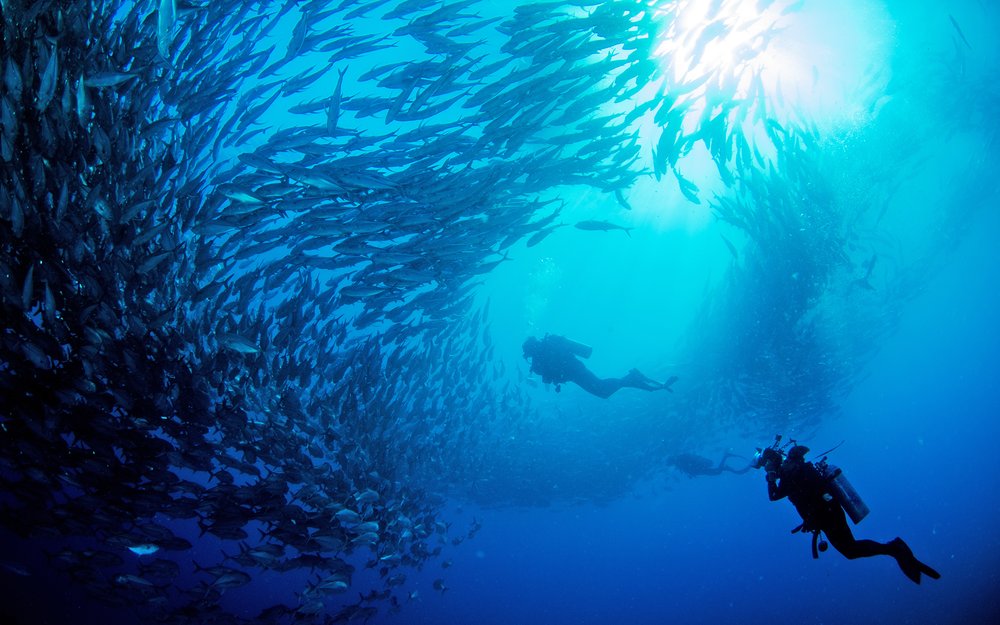From Shoals to Schools: A Look at Fish Communities

If you’ve ever encountered a school of fish—whether from the edge of your Monterey or on a scuba diving excursion—you likely felt awe and wonder at just how precisely the fish moved together. It’s like you’re watching hundreds of bodies move with one mind!
While a school of fish moving all together may seem impossible, the act of teaming up for feeding, mating or travel through the water is actually a real (and very practical) method that fish use for their survival. In today’s blog, we will be studying this one-of-a-kind phenomenon.
From aggregations to shoals to schools
Not every group of fish you see is a school—although any neatly-packed, precisely moving group you see probably is one! Groups of fish are classified as one of three distinctions (aggregations, shoals, or schools) based on how organized they are and what purposes they serve. For example…
- An aggregation is any kind of gathering of fish in the same location. It can be made up of fish from the same or different species, and doesn’t necessarily have to serve a specific purpose (for example, many different fish and fish types may gather together due to the presence of food).
- A shoal is more organized than a simple aggregation. Shoals are characterized by fish interacting with one another and acknowledging their place as part of a larger group—so they’ll tend to move when the group moves and show other social signals. Still, the fish within a shoal may move around freely within that group when large movements from one area to another aren’t taking place.
- Finally, the most organized kind of grouping is the school. Unlike the fish in aggregations and shoals, the fish you’ll find in a school are generally the same in size, age and appearance. Their movements appear to be much more elaborate, coordinated and dependent on one another. If you’ve ever seen a group of fish act in surprisingly perfect coordination, you likely saw a school.
A defense mechanism…
One of the primary reasons that fish stick together is, of course, the defense it provides them. A shoal or school gives fish a chance to blend in, since predators are more likely to notice the “odd man out.” A large group can also look out for one another better than a small one—since so many fish will be on the lookout for predators, the group can more easily avoid the chance of running into one. Finally, it has been suggested that the rapid, coordinated movements of a school of fish may be visually confusing for nearby predators, helping the school to avoid a dangerous encounter.
…and much more
There are several other distinct advantages that go along with schooling or shoaling. Large groups can more easily find food than small groups or single fish can on their own. These groups also provide a simple route to reproduction, since fish never have to travel far in order to locate a suitable mate. Finally, research suggests that certain fish may benefit physically from simply being part of a group—for example, fish separated from their schools may experience stress and agitation more easily, which can be detrimental to their survival.
We hope that today’s blog has given you a better understanding of fish schools—why they occur, how they work, and how they can benefit fish of many species. The next time you see a group of fish move in uncanny coordination, you’ll know just why they’re doing it… although that, of course, won’t make the sight any less spectacular!
Bookmark & Share
User Comments
Be the first to comment on this post below!
Previous Article















